Blog: Greenland, Alaska elections bolster Arctic resource extraction
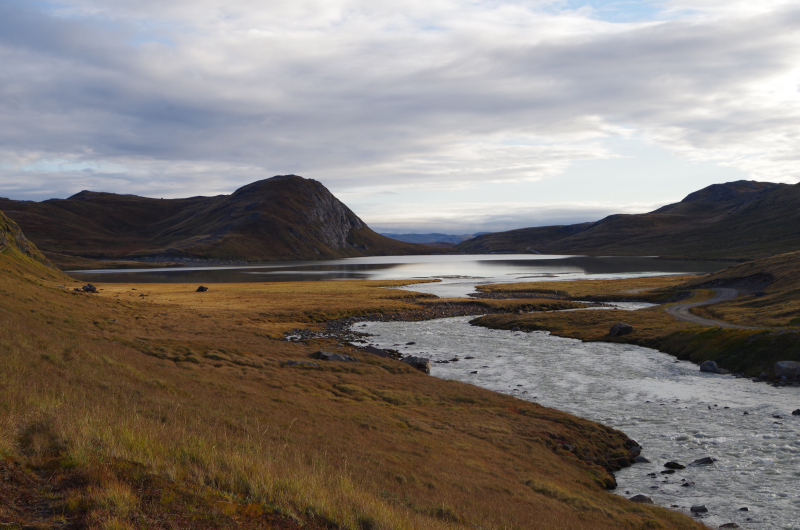
Voters in Greenland and Alaska went to the polls last November, electing politicians from parties in favor of natural resource extraction in both places.
The elections in each Arctic polity were tightly contested, producing mind-bogglingly close results. In Greenland, the incumbent Siumut party, a big promoter of mining, captured a narrow victory with just 326 more votes than the defeated opposition party, Inuit Ataqatigiit (IA). Across the Arctic Ocean in Alaska, the race was so close that incumbent Senator Mark Begich (D), who was up for reelection for a second term, did not concede defeat to Republican challenger Dan Sullivan until nearly two weeks after election day. He ended up losing by just a hair over 6,000 votes. The close results show that people in Greenland and Alaska – two areas often deemed to be the next resource frontier within the Arctic – have elected politicians in favor of resource extraction in the Arctic, but their victories are hardly resounding.
Greenland’s pro-mining party ekes out a narrow victory
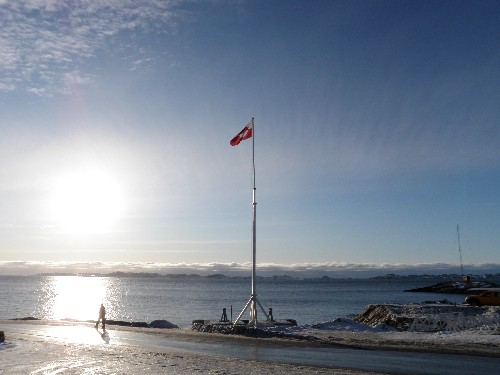
In Greenland’s national elections on November 28, the incumbent Siumut party pulled off a narrow but important victory. Despite being tarnished by the scandal currently embroiling former prime minister and Siumut leader Aleqa Hammond over the misuse of public funds, new party leader Kim Kielsen led the party to win a plurality of votes. Kielsen, a former police officer who previously served as the Minister for Nature and the Environment, managed to distance himself from Hammond and repair the party’s image, a story that The Arctic Journal covers in more detail in its profile of Greenland’s new leader. Siumut received 34.3% of votes compared to opposition party IA, which won just 326 fewer votes to take 33.2%. In Greenland, every vote really does count. Although both Siumut and IA will now hold the same number of seats in Inatsisartut (Greenland’s parliament), since Siumut won those 326 more votes, they will likely get to form the parliamentary coalition. A couple of potential coalition scenarios are considered by Polaris Analytics, a polar political risk consultancy, in its election briefing, while official election results are available from Qinersineq. Siumut, however, won 8.6% votes fewer than it did in the previous election in March 2013, meaning it still needs to work to win back the favor of Greenlandic voters.
The election results should prove heartening to foreign investors like the companies from Australia, China, and South Korea investing in mining projects. Mikå Mered, CEO of Polarisk Analytics, explained in the company’s election briefing: “Overall, the outcome of this election is very good news for investors, especially in the mining and infrastructure sectors.” Siumut may still have to hold a referendum on uranium mining in order to satisfy potential coalition partners, however, so investors may elect to keep some of the cards in their decks until the people of Greenland have spoken.
Issues like education and jobs were also important during the snap election season in Greenland. Voters in Nuuk elected Ineqi Kielsen, a Siumut member, who will now be the youngest member of parliament at just 21 years old. In an interview with Greenlandic newspaper Sermitsiaq, he touched on the importance of both the artisanal craft industry and education. He argued, “It is important to have an education.There is high unemployment among Greenlanders between 17 and 24 years old They must and will be able to move on. I will seriously work for training opportunities for them.” One issue he underscored is that the lack of Danish language skills should not prevent one from holding a job, especially in the craft industry. This effective distancing from Denmark reflects the long-term goal of obtaining sovereignty for Greenland, which Siumut and IA share.
If Ineqi’s surname rings a bell, that’s because his father is a cousin of Kim Kielsen’s father. In Greenland, the apple doesn’t fall far from the tree – just like in Alaska, where Senator Lisa Murkowksi’s father was senator before her and where outgoing Senator Mark Begich’s father was a congressman.
Alaska and the U.S. send oil boosters to the Senate

A few weeks before Greenlanders filled in their ballots, Americans across the country went to the polls for the final midterm elections to be held under President Barack Obama. They cast enough votes in the Republicans’ favor to send them to control the Senate. In Alaska, two men fought a tough race for the Senate: incumbent Mark Begich (D) and challenger Dan Sullivan (R), former Alaska state attorney general and natural resources commissioner. Begich only conceded on November 17 after the final results showed him taking only 45.83% of votes compared to Sullivan’s 47.96% tally. This difference, representing just 6,014 votes, was still bigger than the difference between Siumut and IA’s votes in Greenland, revealing just how very close the race on the world’s largest non-continental island was.
The League of Conservation Voters ranks Begich as voting in favor of the environment 77% of the time, though he generally also supported oil and gas development like most Alaskans and Alaskan politicians. As senator, Sullivan will likely be an even more vocal advocate for the oil and gas industry. Earlier this year, he announced, “My campaign will focus on accelerating the Alaska energy and economic renaissance–to create more opportunity, energy security, and jobs for Alaskans.” Where Sullivan will more likely set himself apart from Begich is in his critical view of the federal government and its responses to climate change. When asked by Sitka, Alaska radio station KCAW about these topics, he responded:
“I think the federal response to climate change should not be what the Obama administration is doing, which is trying to kill energy and low-cost energy, and particularly coal.”
With the Republicans taking control the Senate, they will now get to determine the leadership of all of its committees and subcommittees. Murkowski will likely chair the Committee on Natural Resources, of which she is currently the ranking member. Her “Energy 20/20: A Blueprint for America’s Future” plan (PDF), released in February 2013, calls for on page 16: “Open 2,000 acres in the non‐wilderness portion of the Arctic National Wildlife Refuge (ANWR) coastal plain (1002 area) to exploration and production.” The 1002 area is the 1.5 million acres of land within ANWR, which stretches over 19 million acres, that could theoretically be opened to development. A push for ANWR drilling could happen again under her chairmanship. In this same document, Murkowski prevaricates on the origins of climate change, contending, “The complexity of this problem is underscored by the fact that we haven’t even reached a consensus on what has already happened, which greatly complicates attempts to predict the likely impacts of climate change.” This equivocation comes even though NASA (a government-funded agency, lest we forget) states that 97% of scientists agree on the anthropogenic causes of climate change.
Potentially further damaging for the U.S. in its attempt to adapt to, let alone tackle, climate change is the probable elevation of Senator Jim Inhofe (R-Oklahoma), the current ranking member for the Committee on the Environment and Public Works, to the chairmanship. As has been reported widely throughout the media, Inhofe has called global warming “the greatest hoax perpetrated on the American people” and compared the Environmental Protection Agency, a U.S. federal body tasked with protecting human health and the environment, to the Gestapo. He has even written a book entitled, The Greatest Hoax: How the Global Warming Conspiracy Threatens Your Future. The irony is that if Inhofe has his way, his mere belief that climate change is a conspiracy threaten the nation’s future by resulting in a failure to create robust policies that allow us to begin adapting now rather than delaying further action.
The League of Conservation Voters gives Inhofe an almost unbelievable score of 5% for votes in favor of the environment. This is an absolute travesty for someone who will likely lead the Senate environment committee for the second time. He previously chaired the committee when the Republicans held a majority during former president George W. Bush’s first term, from 2003-2007 – a time when drilling in the Alaska National Wildlife Refuge (ANWR) was openly on the table along with the “Clear Skies Act,” perhaps an attempt at black humor in naming a piece of legislation that would have actually allowed more pollution to be dumped into the skies. The Natural Resources Defence Council, a conservation organization that puts the environment back into “natural resources,” produced a scathing report in 2005 criticizing the Bush administration’s sorry record on the environment, including its support for opening numerous public lands to oil and gas exploration.
Drilling in ANWR may again become open to debate when the Republicans take over the Senate in January, although there probably still will not be enough votes to make it happen. Inhofe states on his own website, “We must open domestic sources of energy production in our Outer Continental Shelf, Alaska, and on federal lands, and I know it is possible to do this in an environmentally friendly way.” Like Alaska’s incoming senator Dan Sullivan, he is also a champion of increasing coal production even as countries like China with more long-term energy plans move away from it. Perhaps he’ll find a friend in Australian Prime Minister Tony Abbott, who received a cold reception at the G-20 summit in Brisbane after announcing that he was “standing up for coal.”
President Obama is opposed to drilling in ANWR. He once remarked in an interview with the League of Conservation Voters, “I strongly reject drilling in the Arctic National Wildlife Refuge because it would irreversibly damage a protected national wildlife refuge without creating sufficient oil supplies to meaningfully affect the global market price or have a discernible impact on U.S. energy security.” That’s a long way from the views of George W. Bush, whose thoughts on drilling in ANWR are captured by this CNN article from 2005. With Inhofe back in the driver’s seat of the environment committee and two Republican senators at the helm in Alaska, they may be coming back.
There’s a will, but no economic way
Greenland and Alaska have both elected leaders who promote natural resource extraction, so policies more favorable to such development could be enacted. Yet right now, trends in global commodity cycles could halt desire to drill for oil, at least in the short term. That’s a big difference from when Bush was considering drilling in ANWR earlier this century, when the price of oil had risen from $25 to $60 between 2003 and 2005. In contrast, on the very day of the Greenland elections last Friday, the price of WTI crude oil dropped 10 percent in one day to reach a low of $65/barrel. This plunge threatens the economic feasibility of drilling on new frontiers across the Arctic, especially offshore, where the break-even price hangs around $90/barrel. But companies like Shell, ExxonMobil, and Rosneft will likely only be hanging up their hats in the short term. Over email, Polarisk CEO Mikå Mered told Cryopolitics: “On the short/medium run (1-5 years) we don’t see low oil prices being a deterrent in Alaska and in the Russian Arctic. On the long run (5+ years), given that most energy outlooks place oil spot prices between $105 and $125 a barrel, and given that the global demand for primary energy (especially in Asia) will boom, we believe that Russian Arctic projects will be profitable.”
Furthermore, cheap oil may actually lower the price of conducting other industrial activities like mining. With cheaper oil, steel becomes less expensive, as do the costs of things like field equipment and transportation. On these factors alone, the economics of mining in Greenland may become slightly more favorable while drilling for oil offshore in places like Alaska becomes less favorable. So while the rare earth minerals and uranium in Greenland may be a bit closer to coming out of the ground, despite the Republican takeover in America, the oil in ANWR and offshore Alaska might have to stay in the ground for some while longer.
Next up: Canada
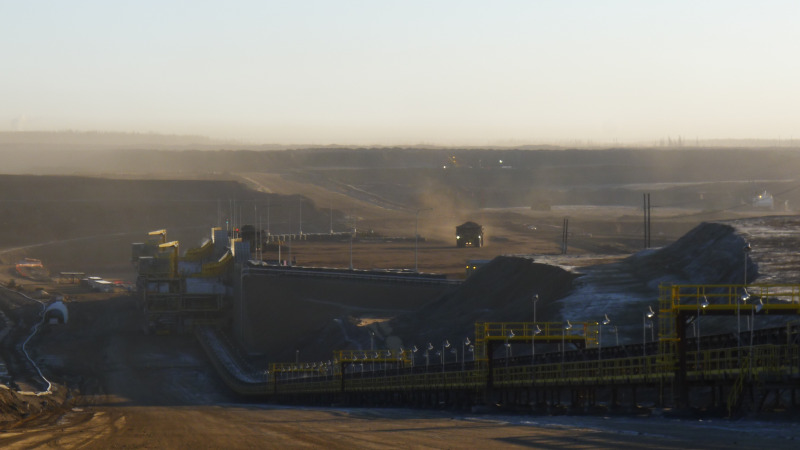
Canada will be the next Arctic state to hold elections. Sometime in 2015, Canadians from Tuktoyaktuk to Halifax will probably go to the polls, potentially on October 19. There are rumors that Prime Minister Stephen Harper actually moved up the next Arctic Council ministerial meeting from its traditional May date to April for electoral reasons. The thinking is that Harper may be able to leverage positive outcomes from the meeting, which will take place in Iqaluit, in the national election – even as Emma Jarratt and James Thomson at the Barents Observer find that his administration has lagged in following through on promises made to the Canadian Arctic despite forking out the big bucks.
As chair of the Arctic Council since 2013, Canada has promoted an agenda of “development for the people of the North.” Canada also pushed through the creation of the Arctic Economic Council. Although development is nominally “sustainable,” as I have written before, a look through the names of the people who attended the inaugural meeting of the Arctic Economic Council shows the dominance of representatives from the non-renewable natural resources extraction sector. Canada’s insular discourse recalls speeches made by politicians in Greenland and Alaska who also want to make sure they get to keep their fair share of the profits from resource development even as these projects are increasingly funded by corporations based in Beijing, Seoul, and Sydney.
Where Canada differs from Alaska and Greenland is that it has many home-grown firms operating in the minerals sector. The Economist notes that half of the world’s publicly listed exploration and mining companies are based in Canada. In that same article, it observed, “Few governments have aligned their interests so closely to those of their country’s energy and mining firms as Canada’s Conservative administration.” If Harper is reelected for a fourth term as prime minister, expect even more support for Canadian oil, gas, and mining firms.
The administration’s long-held hope of constructing the Keystone XL, which would transport oil sands products from Alberta all the way to the Gulf of Mexico, could also potentially benefit from the Republican victory in the U.S. The cross-border pipeline is more likely to receive government approval now for two reasons. First, the election season is over, so lame duck representatives can vote on the controversial issue without fear of repercussions from voters. Second, the Republicans, who largely support the pipeline’s construction, will hold a majority of seats in the Senate starting next year, demonstrating the international effects on extractive infrastructure of domestic elections. If Keystone XL is approved, however, the proposed pipeline from the oil sands in Alberta through the Northwest Territories to the Arctic will become a less attractive idea despite growing excitement in the Canadian North over it. Perhaps that’s the silver lining for Arctic environmentalists dismayed with the pro-resource extraction election results across the Arctic.
Correction: This story has been corrected from an earlier version. Canadians will be going to the polls sometime in 2015, not necessarily in May as stated in a previous version.
This post first appeared on Cryopolitics, an Arctic News and Analysis blog.
Related stories from around the North:
Canada: Canada ponders exceptions to relief well rule for Arctic oil drilling, Alaska Dispatch
Greenland: A look at Greenland’s upcoming parliamentary elections, Blog by Mia Bennett
Norway: Conservative victory in Norway: What does it mean for the Arctic?, Blog by Mia Bennett
Sweden: Land, water rights big issues in Sweden’s Sami elections, Radio Sweden
United States: Legislators to review proposed North Slope, Alaska royalty relief for new field, Alaska Dispatch


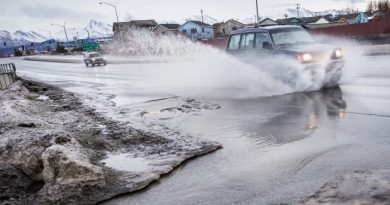
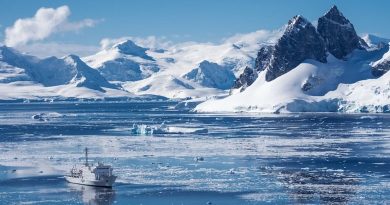
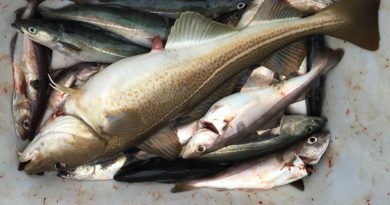
Pingback: Nunavut, Canada holds general election; premier to be chosen in November – Eye on the Arctic